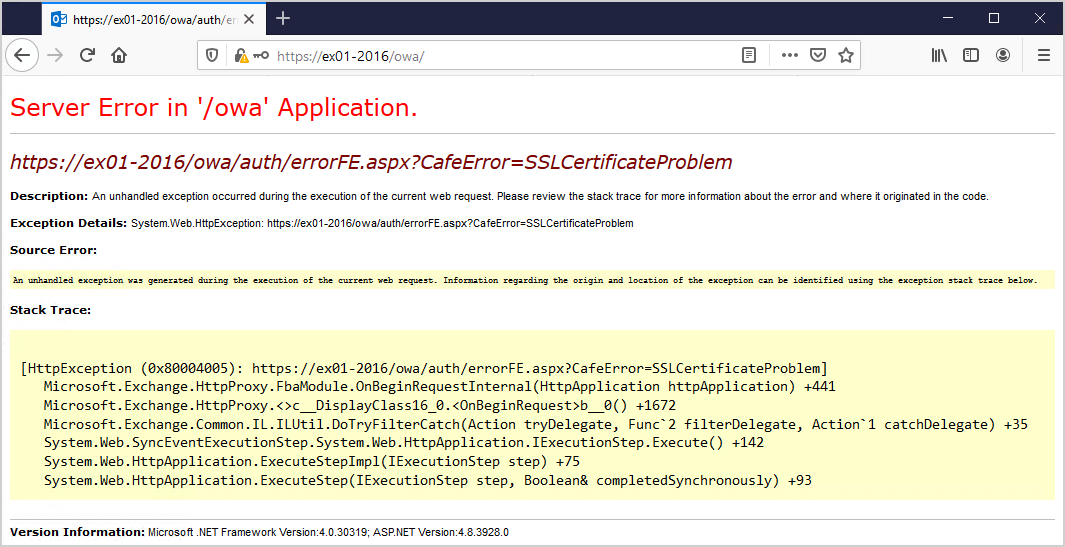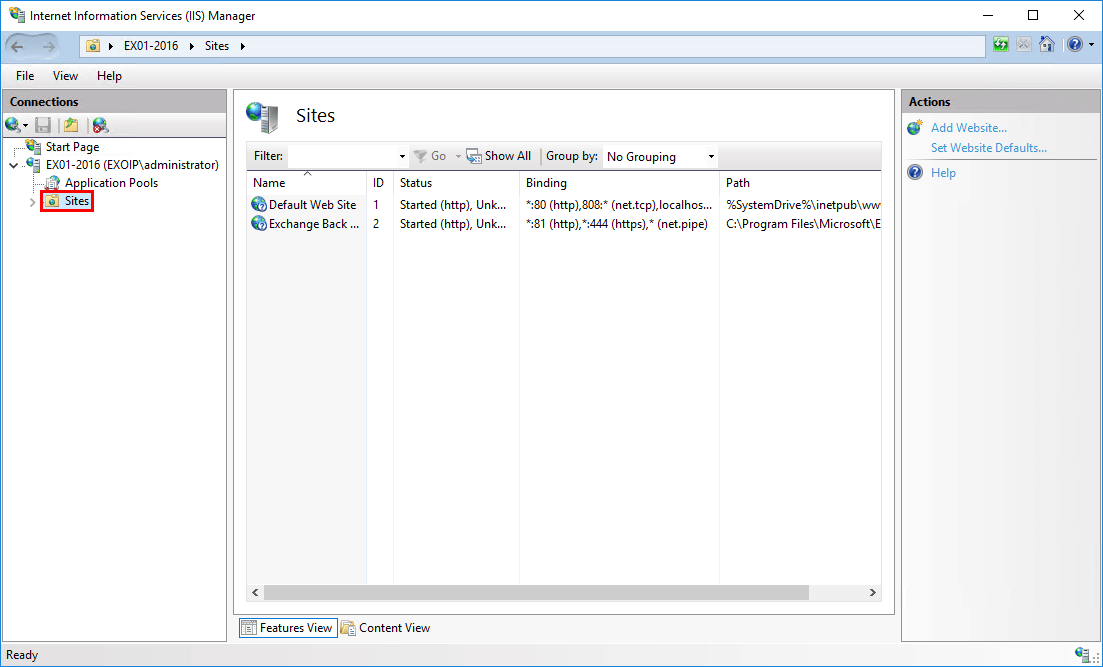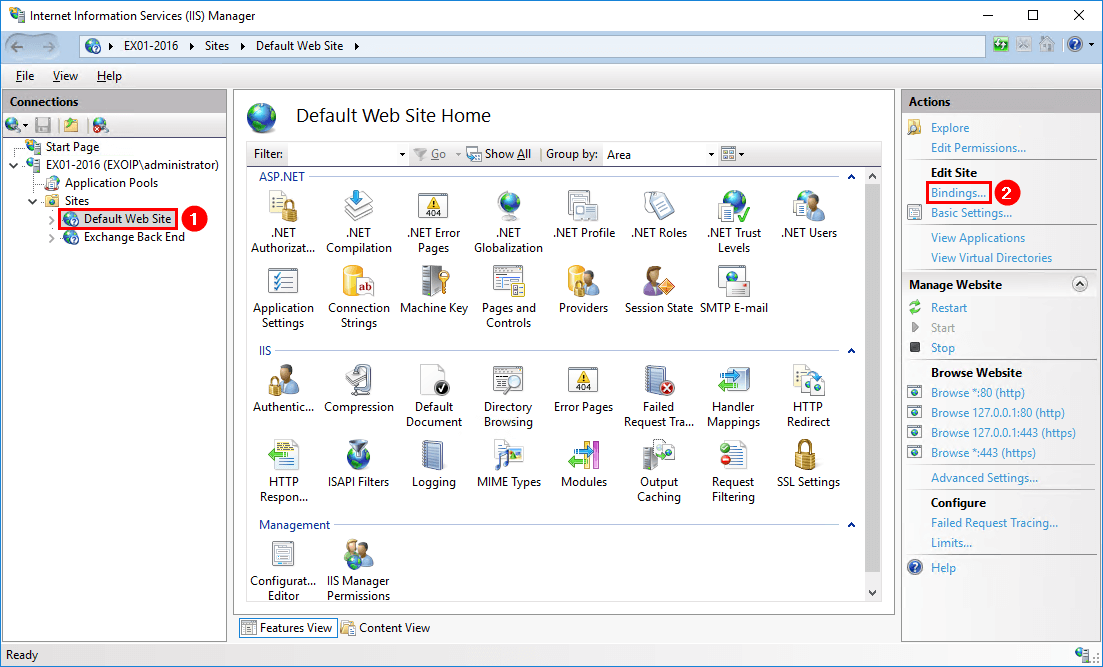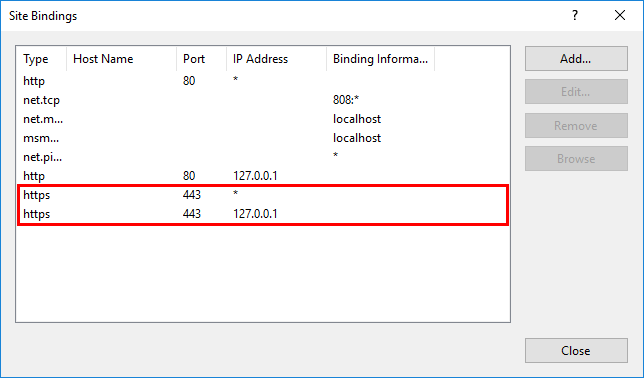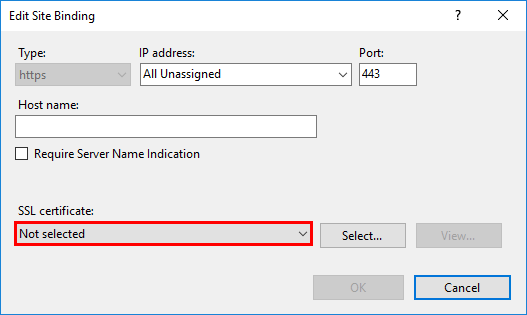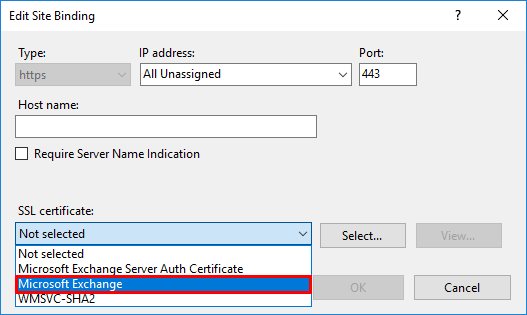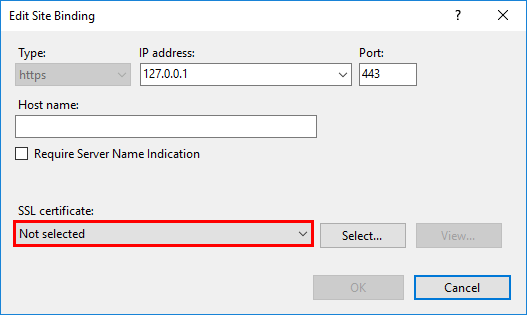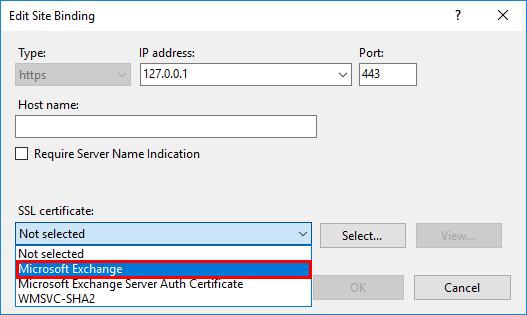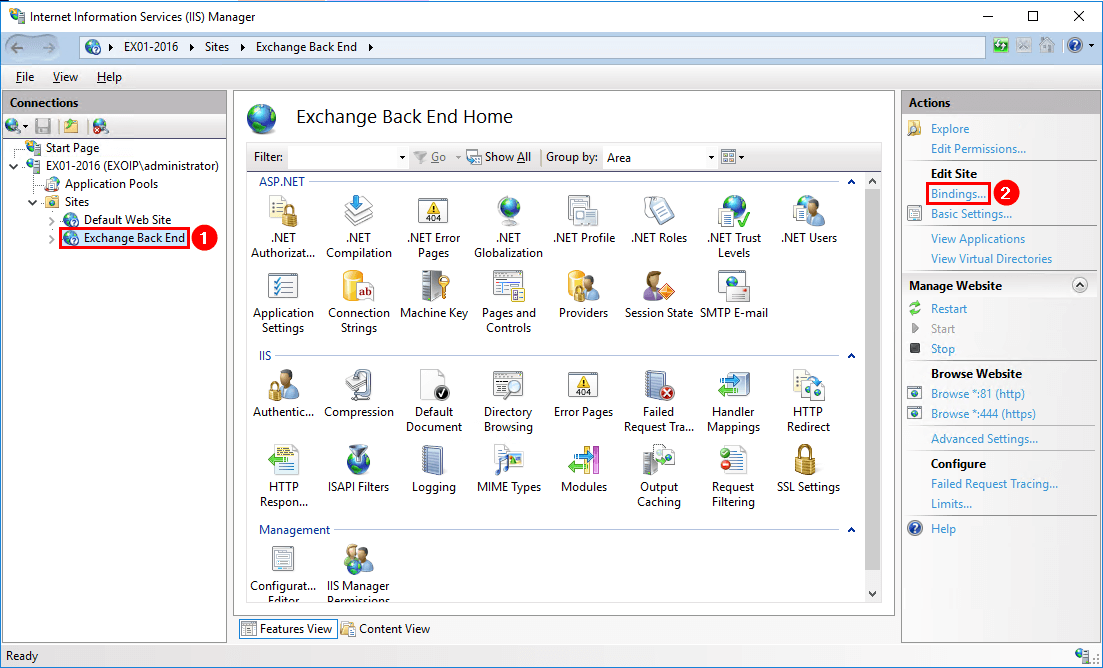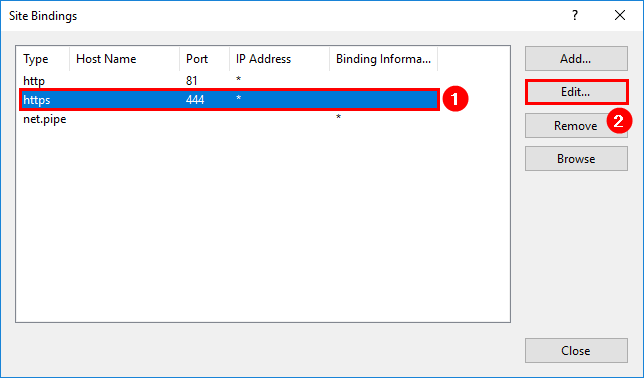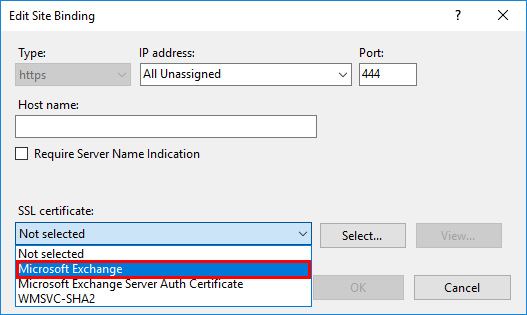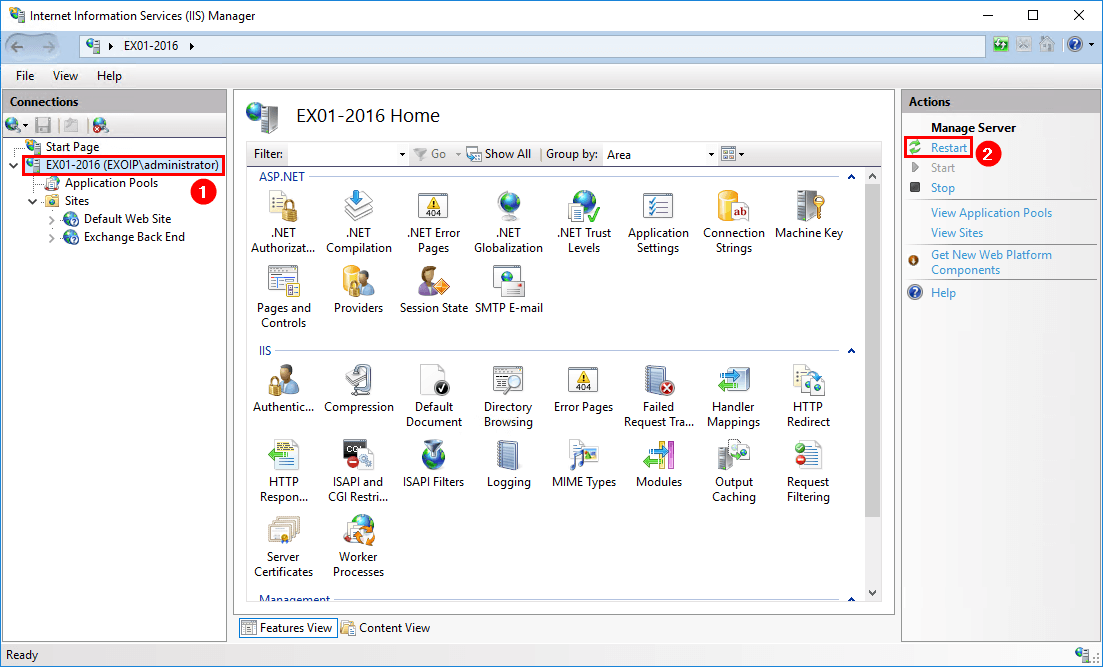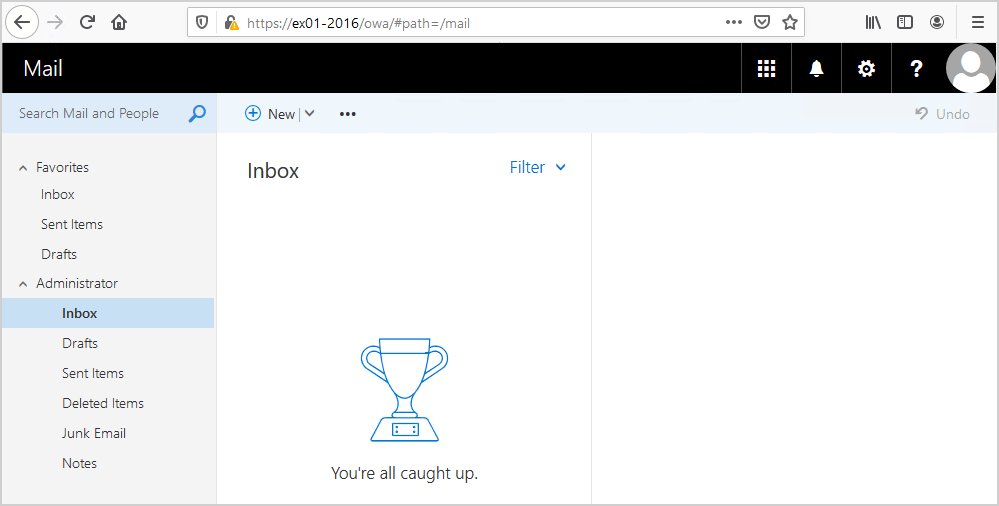ASSERT: HMACProvider.GetCertificates:protectionCertificates.Length<1
Description: An unhandled exception occurred during the execution of the current web request. Please review the stack trace for more information about the error and where it originated in the code.
Exception Details: Microsoft.Exchange.Diagnostics.ExAssertException: ASSERT: HMACProvider.GetCertificates:protectionCertificates.Length<1
Source Error:
An unhandled exception was generated during the execution of the current web request. Information regarding the origin and location of the exception can be identified using the exception stack trace below.
Stack Trace:
[ExAssertException: ASSERT: HMACProvider.GetCertificates:protectionCertificates.Length<1]
Microsoft.Exchange.Diagnostics.ExAssert.AssertInternal(String formatString, Object[] parameters) +241
Microsoft.Exchange.Clients.Common.HmacProvider.GetCertificates() +478
Microsoft.Exchange.Clients.Common.HmacProvider.GetHmacProvider() +143
Microsoft.Exchange.Clients.Common.HmacProvider.ComputeHmac(Byte[][] messageArrays) +16
Microsoft.Exchange.HttpProxy.FbaModule.SetCadataCookies(HttpApplication httpApplication) +826
Microsoft.Exchange.HttpProxy.FbaFormPostProxyRequestHandler.HandleFbaFormPost(BackEndServer backEndServer) +2776
Microsoft.Exchange.HttpProxy.FbaFormPostProxyRequestHandler.ShouldContinueProxy() +20
Microsoft.Exchange.HttpProxy.ProxyRequestHandler.BeginProxyRequestOrRecalculate() +229
Microsoft.Exchange.HttpProxy.ProxyRequestHandler.InternalOnCalculateTargetBackEndCompleted(TargetCalculationCallbackBeacon beacon) +1379
Microsoft.Exchange.HttpProxy.<>c__DisplayClass3f.<OnCalculateTargetBackEndCompleted>b__3e() +311
Microsoft.Exchange.Common.IL.ILUtil.DoTryFilterCatch(TryDelegate tryDelegate, FilterDelegate filterDelegate, CatchDelegate catchDelegate) +35
Microsoft.Exchange.HttpProxy.Diagnostics.SendWatsonReportOnUnhandledException(MethodDelegate methodDelegate, LastChanceExceptionHandler exceptionHandler) +121
Microsoft.Exchange.HttpProxy.ProxyRequestHandler.CallThreadEntranceMethod(MethodDelegate method) +69
[AggregateException: One or more errors occurred.]
Microsoft.Exchange.HttpProxy.ProxyRequestHandler.EndProcessRequest(IAsyncResult result) +416
System.Web.CallHandlerExecutionStep.InvokeEndHandler(IAsyncResult ar) +231
System.Web.CallHandlerExecutionStep.OnAsyncHandlerCompletion(IAsyncResult ar) +172
Exchange OWA and ECP are not working. Signing in to Exchange Server OWA is showing you an error. The error is showing that there is a Server Error in ‘/owa’ Application. When trying with ECP, it’s showing Server Error in ‘/ecp’ Application. How did this happen, and what is the solution to it? In this article, you will learn how to fix Exchange Server Error in ‘/owa’ Application.
Table of contents
- Server Error in ‘/owa’ Application
- Explanation Server Error in ‘/owa’ Application
- Solution for Server Error in ‘/owa’ Application
- Default Web Site configure bindings
- Exchange Back End configure bindings
- Conclusion
When starting Exchange OWA (Outlook Web Access) and entering the credentials, the below error appears. The same happens when going to the ECP (Exchange Control Panel) page.
Server Error in ‘/owa’ Application.
https://ex01-2016/owa/auth/errorFE.aspx?CafeError=SSLCertificateProblem
Description: An unhandled exception occurred during the execution of the current web request. Please review the stack trace for more information about the error and where it originated in the code.Exception Details: System.Web.HttpException: https://ex01-2016/owa/auth/errorFE.aspx?CafeError=SSLCertificateProblemSource Error:An unhandled exception was generated during the execution of the current web request. Information regarding the origin and location of the exception can be identified using the exception stack trace below.Stack Trace:[HttpException (0x80004005): https://ex01-2016/owa/auth/errorFE.aspx?CafeError=SSLCertificateProblem]
Microsoft.Exchange.HttpProxy.FbaModule.OnBeginRequestInternal(HttpApplication httpApplication) +441
Microsoft.Exchange.HttpProxy.<>c__DisplayClass16_0.b__0() +1672
Microsoft.Exchange.Common.IL.ILUtil.DoTryFilterCatch(Action tryDelegate, Func2 filterDelegate, Action1 catchDelegate) +35
System.Web.SyncEventExecutionStep.System.Web.HttpApplication.IExecutionStep.Execute() +142
System.Web.HttpApplication.ExecuteStepImpl(IExecutionStep step) +75
System.Web.HttpApplication.ExecuteStep(IExecutionStep step, Boolean& completedSynchronously) +93Version Information: Microsoft .NET Framework Version:4.0.30319; ASP.NET Version:4.8.3928.0
Why is this happening and what is the solution for Exchange 2016 OWA and ECP not working?
Explanation Server Error in ‘/owa’ Application
Why did the error start to show when signing in to Exchange OWA and ECP? This can happen if you, for example:
- Install Exchange Cumulative Update
- Remove certificate that was assigned to Exchange Server
If you already have a third-party certificate installed, select that in the next part. If you don’t have a third-party certificate because you removed it, select the default Microsoft Exchange self-signed certificate. You can always select the self-signed certificate to get access to the Exchange Admin Center. After that, you can import a new certificate.
Solution for Server Error in ‘/owa’ Application
Sign in to the Exchange Server. Start Internet Information Services (IIS) Manager. Unfold the Exchange Server and click the Sites list. You will find the Default Web Site and Exchange Back End.
Default Web Site configure bindings
Click on Default Web Site and click Bindings in the actions panel.
Check both the site bindings with type https. Double-click the first type https with IP Address * (asterisk).
The SSL certificate is Not selected.
Click on Not selected and select the Microsoft Exchange self-signed certificate from the dropdown menu. Do you have a third-party certificate? Select that certificate instead. Click OK.
In my example, I selected the Exchange self-signed certificate. That’s because I don’t yet have a third-party certificate configured. The self-signed certificate is created by default when you install Exchange Server.
Read more: Install free let’s encrypt certificate in Exchange Server »
On my end, after assigning the certificate it was reverted back to Not selected. Select the certificate again from the dropdown menu and click OK. To make sure it’s now selected, check again. This time it’s selected.
Important: After selecting the certificate from the dropdown menu, it sometimes does not get selected. Make sure that you double-check after assigning the certificate.
Do the same with the second site binding. Double-click IP Address 127.0.0.1.
Select the certificate and click OK. Again, double-check if it’s assigned. If the certificate is already bound to the site, you don’t have to make any changes.
Now that we have the certificates assigned and checked both site bindings, we can proceed to the next step.
Exchange Back End configure bindings
Click on Exchange Back End and click Bindings in the actions panel.
Select the site binding with type https and port 444. Click Edit...
Select the Microsoft Exchange self-signed certificate from the dropdown menu. Click OK. If you have a third-party certificate, select that. Don’t forget to double-check after assigning the certificate.
After applying and double-checking, you have to restart IIS.
After IIS restarts, go to Exchange OWA or ECP and sign in. You can now successfully sign in.
I hope this article helped you fix the server error in ‘/owa’ application in Exchange Server. Good to know is that it also fixed the server error in ‘/ecp’ application in Exchange Server.
Keep reading: Recreate virtual directories in Exchange Server »
Conclusion
You learned why you get Server Error in ‘/owa’ Application in Exchange Server. This happens when the bindings are not configured to the Exchange web sites in IIS. Bind the certificates to both the Exchange Default Web Site and Exchange Back End. Don’t forget to double-check after selecting the certificates. As of last, restart IIS. Now you can sign in to OWA and ECP without the Server Error in ‘/owa’ Application showing up.
Did you enjoy this article? You may also like the article Exchange Hybrid test plan checklist. Don’t forget to follow us and share this article.
ALI TAJRAN is a passionate IT Architect, IT Consultant, and Microsoft Certified Trainer. He started Information Technology at a very young age, and his goal is to teach and inspire others. Read more »
Hi all,
Recently, I have installed a new Exchange 2007 server (named exch2007) in our Exchange 2003 environment. The server was installed Office SharePoint Server 2007 before Exchange 2007. The installation of Exchange 2007 was successful and it works fine.
Last Friday, I was accidentally removed the «Default Web Site» from IIS server using «SharePoint Central Administration» website. Then I realise that I can’t login to OWA again, because the «Default Web Site» was removed. And I found a KB (http://support.microsoft.com/kb/320202), I had followed all the instruction under «Exchange 2007» to regenerate the CAS, but no luck.
Web Error Msg:
=======================================================================
Server Error in ‘/owa’ Application.
Runtime Error
Description: An application error occurred on the server. The current custom error settings for this application prevent the details of the application error from being viewed.
Details: To enable the details of this specific error message to be viewable on the local server machine, please create a <customErrors> tag within a «web.config» configuration file located in the root directory of the current web application. This <customErrors> tag should then have its «mode» attribute set to «RemoteOnly». To enable the details to be viewable on remote machines, please set «mode» to «Off».
<!-- Web.Config Configuration File -->
<configuration>
<system.web>
<customErrors mode="RemoteOnly"/>
</system.web>
</configuration>
Notes: The current error page you are seeing can be replaced by a custom error page by modifying the «defaultRedirect» attribute of the application’s <customErrors> configuration tag to point to a custom error page URL.
<!-- Web.Config Configuration File -->
<configuration>
<system.web>
<customErrors mode="On" defaultRedirect="mycustompage.htm"/>
</system.web>
</configuration>
==============================================================
Under Event logs (application), there are so many WARNING message from source — «ASP.NET 2.0.50727.0».
Event 1310:
Date: 04/12/2007
Source: ASP.NET 2.0.50727.0
Time: 12:16:56PM
Category: Web Event
Type: Warning
Event ID: 1310
User: N/A
Computer: EXCH2007
Description:
Event code: 3008
Event message: A configuration error has occurred.
Event time: 04/12/2007 12:16:56 PM
Event time (UTC): 04/12/2007 4:16:56 AM
Event ID: 83e3b6988a774615b1cebd8cae62b6bc
Event sequence: 1
Event occurrence: 1
Event detail code: 0
Application information:
Application domain: /LM/W3SVC/1/ROOT/owa-3-128412154157243048
Trust level: WSS_Minimal
Application Virtual Path: /owa
Application Path: C:Program FilesMicrosoftExchange ServerClientAccessowa
Machine name: EXCH2007
Process information:
Process ID: 5348
Process name: w3wp.exe
Account name: NT AUTHORITYNETWORK SERVICE
Exception information:
Exception type: HttpException
Exception message: Could not load file or assembly ‘Microsoft.Exchange.Data.Storage, Version=8.0.0.0, Culture=neutral, PublicKeyToken=31bf3856ad364e35’ or one of its dependencies. Failed to grant permission to execute. (Exception from HRESULT: 0x80131418) (C:Program FilesMicrosoftExchange ServerClientAccessowaweb.config line 55)
Request information:
Request URL: https://localhost/owa/auth/logon.aspx?url=https://localhost/owa/&reason=0
Request path: /owa/auth/logon.aspx
User host address: 127.0.0.1
User:
Is authenticated: False
Authentication Type:
Thread account name: NT AUTHORITYNETWORK SERVICE
Thread information:
Thread ID: 5
Thread account name: NT AUTHORITYNETWORK SERVICE
Is impersonating: False
Stack trace: at System.Web.Compilation.BuildManager.ReportTopLevelCompilationException()
at System.Web.Compilation.BuildManager.EnsureTopLevelFilesCompiled()
at System.Web.Hosting.HostingEnvironment.Initialize(ApplicationManager appManager, IApplicationHost appHost, IConfigMapPathFactory configMapPathFactory, HostingEnvironmentParameters hostingParameters)
Custom event details:
For more information, see Help and Support Center at http://go.microsoft.com/fwlink/events.asp.
Event 1309:
Date: 04/12/2007
Source: ASP.NET 2.0.50727.0
Time: 12:18:14PM
Category: Web Event
Type: Warning
Event ID: 1309
User: N/A
Computer: EXCH2007
Description:
Event code: 3005
Event message: An unhandled exception has occurred.
Event time: 04/12/2007 12:18:14 PM
Event time (UTC): 04/12/2007 4:18:14 AM
Event ID: ecbd8e5617d24d18a5a27ae84e20e95a
Event sequence: 8
Event occurrence: 7
Event detail code: 0
Application information:
Application domain: /LM/W3SVC/1/ROOT/Autodiscover-1-128412142521461798
Trust level: WSS_Minimal
Application Virtual Path: /Autodiscover
Application Path: C:Program FilesMicrosoftExchange ServerClientAccessAutodiscover
Machine name: EXCH2007
Process information:
Process ID: 5740
Process name: w3wp.exe
Account name: NT AUTHORITYSYSTEM
Exception information:
Exception type: FileLoadException
Exception message: Could not load file or assembly ‘Microsoft.Exchange.Diagnostics, Version=8.0.0.0, Culture=neutral, PublicKeyToken=31bf3856ad364e35’ or one of its dependencies. An error relating to security occurred. (Exception from HRESULT: 0x8013150A)
Request information:
Request URL: https://exch2007.domainname.com/Autodiscover/Autodiscover.xml
Request path: /Autodiscover/Autodiscover.xml
User host address: x.x.x.x
User:
Is authenticated: False
Authentication Type:
Thread account name: NT AUTHORITYSYSTEM
Thread information:
Thread ID: 5
Thread account name: NT AUTHORITYSYSTEM
Is impersonating: True
Stack trace: at Microsoft.Exchange.Autodiscover.Global.Application_BeginRequest(Object sender, EventArgs e)
at System.Web.HttpApplication.SyncEventExecutionStep.System.Web.HttpApplication.IExecutionStep.Execute()
at System.Web.HttpApplication.ExecuteStep(IExecutionStep step, Boolean& completedSynchronously)
Custom event details:
For more information, see Help and Support Center at http://go.microsoft.com/fwlink/events.asp.
===============================================
Message from Exchange Management Shell:
[PS] C:Documents and Settingsexch.admin>Get-OwaVirtualDirectory
Name Server OwaVersion
—- —— ———-
Exchange (Default Web S… EXCH2007 Exchange2003or2000
Exadmin (Default Web Site) EXCH2007 Exchange2003or2000
Public (Default Web Site) EXCH2007 Exchange2003or2000
Exchweb (Default Web Site) EXCH2007 Exchange2003or2000
owa (Default Web Site) EXCH2007 Exchange2007
[PS] C:Documents and Settingsexch.admin>Test-OwaConnectivity -Verbose
VERBOSE: Test-OwaConnectivity : Beginning processing.
VERBOSE: Do you want to test OWA connectivity on Client Access server exch2007.domainname.com?
VERBOSE: Test-OwaConnectivity : Creating a list of Outlook Web Access virtual directories to test for Client Access server ‘exch2007’, Mailbox server ‘exch2007’.
VERBOSE: Test-OwaConnectivity : Adding test case for Client Access server ‘exch2007’, Mailbox server ‘exch2007’, URL
‘https://exch2007.domainname.com/owa/’.
VERBOSE: Test-OwaConnectivity : Starting test with target URL = ‘https://exch2007.domainname.com/owa/’.
VERBOSE: Test-OwaConnectivity : This URL type is Internal, so any certificate will be trusted.
VERBOSE: Test-OwaConnectivity : Sending HTTP GET logon request without credentials for authentication type verification.
WARNING: The test encountered an error while making the initial request to Outlook Web Access.
HTTP code: 500
WARNING: Test FAILED for URL ‘https://exch2007.domainname.com/owa/’.
WARNING: column «Error» does not fit into the display and was removed.
ClientAccessServer MailboxServer URL Scenario Result Latency (ms)
——————— ————- — ——— —— ——
exch2007 exch2007 https://exch2007.domainname.com/owa/ Logon Failure -1
VERBOSE: Test-OwaConnectivity : Ending processing.
==================================================================
Please help.
Thank you.
User324223778 posted
Hi ,
I’ve an ASP.NET 2.0 web site working with SQL Server 2005 Database and IIS 5
When I try to accesss the web site from any other PC and access a web form calling a database i got this error.
Please Help
Server Error in ‘/HSEWebUI’ Application.
Login failed for user ‘AAASPNET’.
Description:
An unhandled exception occurred during the execution of the current web request. Please review the stack trace for more information about the error and where it originated in the code.
Exception Details: System.Data.SqlClient.SqlException: Login failed for user ‘AAASPNET’.
Source Error:
An unhandled exception was generated during the execution of the current web request. Information regarding the origin and location of the exception can be identified using the exception stack trace below.
Stack Trace:
[SqlException (0x80131904): Login failed for user 'AAASPNET'.] System.Data.SqlClient.SqlInternalConnection.OnError(SqlException exception, Boolean breakConnection) +734915 System.Data.SqlClient.TdsParser.ThrowExceptionAndWarning(TdsParserStateObject stateObj) +188 System.Data.SqlClient.TdsParser.Run(RunBehavior runBehavior, SqlCommand cmdHandler, SqlDataReader dataStream, BulkCopySimpleResultSet bulkCopyHandler, TdsParserStateObject stateObj) +1838 System.Data.SqlClient.SqlInternalConnectionTds.CompleteLogin(Boolean enlistOK) +33 System.Data.SqlClient.SqlInternalConnectionTds.OpenLoginEnlist(SqlConnection owningObject, SqlConnectionString connectionOptions, String newPassword, Boolean redirectedUserInstance) +628 System.Data.SqlClient.SqlInternalConnectionTds..ctor(DbConnectionPoolIdentity identity, SqlConnectionString connectionOptions, Object providerInfo, String newPassword, SqlConnection owningObject, Boolean redirectedUserInstance) +170 System.Data.SqlClient.SqlConnectionFactory.CreateConnection(DbConnectionOptions options, Object poolGroupProviderInfo, DbConnectionPool pool, DbConnection owningConnection) +359 System.Data.ProviderBase.DbConnectionFactory.CreatePooledConnection(DbConnection owningConnection, DbConnectionPool pool, DbConnectionOptions options) +28 System.Data.ProviderBase.DbConnectionPool.CreateObject(DbConnection owningObject) +424 System.Data.ProviderBase.DbConnectionPool.UserCreateRequest(DbConnection owningObject) +66 System.Data.ProviderBase.DbConnectionPool.GetConnection(DbConnection owningObject) +496 System.Data.ProviderBase.DbConnectionFactory.GetConnection(DbConnection owningConnection) +82 System.Data.ProviderBase.DbConnectionClosed.OpenConnection(DbConnection outerConnection, DbConnectionFactory connectionFactory) +105 System.Data.SqlClient.SqlConnection.Open() +111 System.Data.Common.DbDataAdapter.FillInternal(DataSet dataset, DataTable[] datatables, Int32 startRecord, Int32 maxRecords, String srcTable, IDbCommand command, CommandBehavior behavior) +121 System.Data.Common.DbDataAdapter.Fill(DataSet dataSet, Int32 startRecord, Int32 maxRecords, String srcTable, IDbCommand command, CommandBehavior behavior) +137 System.Data.Common.DbDataAdapter.Fill(DataSet dataSet, String srcTable) +83 System.Web.UI.WebControls.SqlDataSourceView.ExecuteSelect(DataSourceSelectArguments arguments) +1770 System.Web.UI.DataSourceView.Select(DataSourceSelectArguments arguments, DataSourceViewSelectCallback callback) +17 System.Web.UI.WebControls.DataBoundControl.PerformSelect() +149 System.Web.UI.WebControls.BaseDataBoundControl.DataBind() +70 System.Web.UI.WebControls.GridView.DataBind() +4 System.Web.UI.WebControls.BaseDataBoundControl.EnsureDataBound() +82 System.Web.UI.WebControls.CompositeDataBoundControl.CreateChildControls() +69 System.Web.UI.Control.EnsureChildControls() +87 System.Web.UI.Control.PreRenderRecursiveInternal() +41 System.Web.UI.Control.PreRenderRecursiveInternal() +161 System.Web.UI.Control.PreRenderRecursiveInternal() +161 System.Web.UI.Page.ProcessRequestMain(Boolean includeStagesBeforeAsyncPoint, Boolean includeStagesAfterAsyncPoint) +1360
Version Information: Microsoft .NET Framework Version:2.0.50727.42; ASP.NET Version:2.0.50727.42
<!— [SqlException]: Login failed for user ‘AAASPNET’. at System.Data.SqlClient.SqlInternalConnection.OnError(SqlException exception, Boolean breakConnection) at System.Data.SqlClient.TdsParser.ThrowExceptionAndWarning(TdsParserStateObject stateObj)
at System.Data.SqlClient.TdsParser.Run(RunBehavior runBehavior, SqlCommand cmdHandler, SqlDataReader dataStream, BulkCopySimpleResultSet bulkCopyHandler, TdsParserStateObject stateObj) at System.Data.SqlClient.SqlInternalConnectionTds.CompleteLogin(Boolean
enlistOK) at System.Data.SqlClient.SqlInternalConnectionTds.OpenLoginEnlist(SqlConnection owningObject, SqlConnectionString connectionOptions, String newPassword, Boolean redirectedUserInstance) at System.Data.SqlClient.SqlInternalConnectionTds..ctor(DbConnectionPoolIdentity
identity, SqlConnectionString connectionOptions, Object providerInfo, String newPassword, SqlConnection owningObject, Boolean redirectedUserInstance) at System.Data.SqlClient.SqlConnectionFactory.CreateConnection(DbConnectionOptions options, Object poolGroupProviderInfo,
DbConnectionPool pool, DbConnection owningConnection) at System.Data.ProviderBase.DbConnectionFactory.CreatePooledConnection(DbConnection owningConnection, DbConnectionPool pool, DbConnectionOptions options) at System.Data.ProviderBase.DbConnectionPool.CreateObject(DbConnection
owningObject) at System.Data.ProviderBase.DbConnectionPool.UserCreateRequest(DbConnection owningObject) at System.Data.ProviderBase.DbConnectionPool.GetConnection(DbConnection owningObject) at System.Data.ProviderBase.DbConnectionFactory.GetConnection(DbConnection
owningConnection) at System.Data.ProviderBase.DbConnectionClosed.OpenConnection(DbConnection outerConnection, DbConnectionFactory connectionFactory) at System.Data.SqlClient.SqlConnection.Open() at System.Data.Common.DbDataAdapter.FillInternal(DataSet dataset,
DataTable[] datatables, Int32 startRecord, Int32 maxRecords, String srcTable, IDbCommand command, CommandBehavior behavior) at System.Data.Common.DbDataAdapter.Fill(DataSet dataSet, Int32 startRecord, Int32 maxRecords, String srcTable, IDbCommand command,
CommandBehavior behavior) at System.Data.Common.DbDataAdapter.Fill(DataSet dataSet, String srcTable) at System.Web.UI.WebControls.SqlDataSourceView.ExecuteSelect(DataSourceSelectArguments arguments) at System.Web.UI.DataSourceView.Select(DataSourceSelectArguments
arguments, DataSourceViewSelectCallback callback) at System.Web.UI.WebControls.DataBoundControl.PerformSelect() at System.Web.UI.WebControls.BaseDataBoundControl.DataBind() at System.Web.UI.WebControls.GridView.DataBind() at System.Web.UI.WebControls.BaseDataBoundControl.EnsureDataBound()
at System.Web.UI.WebControls.CompositeDataBoundControl.CreateChildControls() at System.Web.UI.Control.EnsureChildControls() at System.Web.UI.Control.PreRenderRecursiveInternal() at System.Web.UI.Control.PreRenderRecursiveInternal() at System.Web.UI.Control.PreRenderRecursiveInternal()
at System.Web.UI.Page.ProcessRequestMain(Boolean includeStagesBeforeAsyncPoint, Boolean includeStagesAfterAsyncPoint) [HttpUnhandledException]: Exception of type ‘System.Web.HttpUnhandledException’ was thrown. at System.Web.UI.Page.HandleError(Exception e)
at System.Web.UI.Page.ProcessRequestMain(Boolean includeStagesBeforeAsyncPoint, Boolean includeStagesAfterAsyncPoint) at System.Web.UI.Page.ProcessRequest(Boolean includeStagesBeforeAsyncPoint, Boolean includeStagesAfterAsyncPoint) at System.Web.UI.Page.ProcessRequest()
at System.Web.UI.Page.ProcessRequestWithNoAssert(HttpContext context) at System.Web.UI.Page.ProcessRequest(HttpContext context) at ASP.inbox_aspx.ProcessRequest(HttpContext context) at System.Web.HttpApplication.CallHandlerExecutionStep.System.Web.HttpApplication.IExecutionStep.Execute()
at System.Web.HttpApplication.ExecuteStep(IExecutionStep step, Boolean& completedSynchronously) —>
- Home
- Microsoft
- Exchange 2013
- Cannot Login To Exchange 2013 ECP After New Install
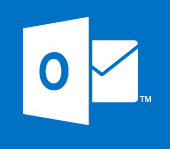
Written by Allen White on November 23, 2012. Posted in Exchange 2013
If you have just installed Exchange 2013 on Server 2012, one of the first things you will do is try and log-in into the now ECP to start configuring Exchange 2013. I cam across an iss that when you try to log into the ECP you get the error below.
Server Error in ‘/owa’ Application.
——————————————————————————–
The Active Directory user wasn’t found.
Description: An unhandled exception occurred during the execution of the current web request. Please review the stack trace for more information about the error and where it originated in the code.
Exception Details: Microsoft.Exchange.Data.Storage.ObjectNotFoundException: The Active Directory user wasn’t found.
Source Error:
An unhandled exception was generated during the execution of the current web request. Information regarding the origin and location of the exception can be identified using the exception stack trace below.
Stack Trace:
[ObjectNotFoundException: The Active Directory user wasn’t found.]
Microsoft.Exchange.Clients.Owa2.Server.Core.OwaIdentity.CreateExchangePrincipal() +1118
Microsoft.Exchange.Clients.Owa2.Server.Core.UserContext.Load(OwaIdentity logonIdentity, OwaIdentity mailboxIdentity) +590
Microsoft.Exchange.Clients.Owa2.Server.Core.UserContextManager.CreateUserContext(HttpContext httpContext, UserContextKey userContextKey, ClientSecurityContext overrideClientSecurityContext, UserContext& userContext) +776
Microsoft.Exchange.Clients.Owa2.Server.Core.UserContextManager.AquireUserContext(HttpContext httpContext, ClientSecurityContext overrideClientSecurityContext) +229
Microsoft.Exchange.Clients.Owa2.Server.Core.UserContextManager.GetUserContext(HttpContext httpContext, Boolean create) +118
Microsoft.Exchange.Clients.Owa2.Server.Core.RequestDispatcher.InternalDispatchRequest(RequestContext requestContext) +587
Microsoft.Exchange.Clients.Owa2.Server.Core.RequestDispatcher.DispatchRequest(RequestContext requestContext) +297
Microsoft.Exchange.Clients.Owa2.Server.Core.OwaRequestHandler.OnPostAuthorizeRequest(Object sender, EventArgs e) +352
System.Web.SyncEventExecutionStep.System.Web.HttpApplication.IExecutionStep.Execute() +80
System.Web.HttpApplication.ExecuteStep(IExecutionStep step, Boolean& completedSynchronously) +165——————————————————————————–
Version Information: Microsoft .NET Framework Version:4.0.30319; ASP.NET Version:4.0.30319.17929
After some digging around I worked out that this issue is because the administrator account that you are logging in as did not have a mailbox created and attached to it as it should during the Exchange 2013 installation. To fix this issue we run the commands below to create a mailbox for the administrator.
enable-mailbox -identity administrator
OR the account you were trying to log into the ECP/EAC as.
Then confirm in Active Directory that the account that yuo have attached the mailbox to is a member of the Exchange Organization Managment group.
You may need to reboot the server for these changes to take place, this wil resolve the issueo of not being able to log into the Exchange 2013 EAC.
Tags: ECP
Allen White
Allen is an IT Consultant and holds the following accreditations. MCSA, MCSE, MCTS, MCITP, CCA, CCSP, VCP 4,5, 6 and HP ASE, AIS — Network Infrastructure.
Search
Hi,
We are getting «Server Error in ‘/owa’ application.» while trying to browse to Exchange OWA
Error details
Log Name: Application
Source: ASP.NET 2.0.50727.0
Date: 2/5/2013 10:38:09 AM
Event ID: 1310
Task Category: Web Event
Level: Warning
Keywords: Classic
User: N/A
Computer: abc.domain.local
Description:
Event code: 3008
Event message: A configuration error has occurred.
Event time: 2/5/2013 10:38:09 AM
Event time (UTC): 2/5/2013 10:38:09 AM
Event ID: eefa0ae60bbc462c92ab6166e87cffb3
Event sequence: 1
Event occurrence: 1
Event detail code: 0
Application information:
Application domain: /LM/W3SVC/1/ROOT/owa-23875-130045342889893016
Trust level: Full
Application Virtual Path: /owa
Application Path: D:Program FilesMicrosoftExchange ServerV14ClientAccessowa
Machine name: LONPEXHTCA02
Process information:
Process ID: 11744
Process name: w3wp.exe
Account name: IIS APPPOOLDefaultAppPool
Exception information:
Exception type: ConfigurationErrorsException
Exception message: Could not load file or assembly ‘Symantec.EnterpriseVault.Owa, Version=10.0.1.0, Culture=neutral, PublicKeyToken=null’ or one of its dependencies. Access is denied.
Request information:
Request URL: https://abc.domain.local:443/owa/auth/logon.aspx?url=https://abc.domain.local/ecp/&reason=0
Request path: /owa/auth/logon.aspx
User host address: fe80::5490:9eb0:76b1:e4ew3wp.exe
User:
Is authenticated: False
Authentication Type:
Thread account name: IIS APPPOOLDefaultAppPool
Thread information:
Thread ID: 52
Thread account name: IIS APPPOOLDefaultAppPool
Is impersonating: False
Stack trace: at System.Web.Configuration.ConfigUtil.GetType(String typeName, String propertyName, ConfigurationElement configElement, XmlNode node, Boolean checkAptcaBit, Boolean ignoreCase)
at System.Web.Configuration.Common.ModulesEntry..ctor(String name, String typeName, String propertyName, ConfigurationElement configElement)
at System.Web.HttpApplication.BuildIntegratedModuleCollection(List`1 moduleList)
at System.Web.HttpApplication.GetModuleCollection(IntPtr appContext)
at System.Web.HttpApplication.RegisterEventSubscriptionsWithIIS(IntPtr appContext, HttpContext context, MethodInfo[] handlers)
at System.Web.HttpApplication.InitSpecial(HttpApplicationState state, MethodInfo[] handlers, IntPtr appContext, HttpContext context)
at System.Web.HttpApplicationFactory.GetSpecialApplicationInstance(IntPtr appContext, HttpContext context)
at System.Web.Hosting.PipelineRuntime.InitializeApplication(IntPtr appContext)
Custom event details:
Event Xml:
<Event xmlns=»http://schemas.microsoft.com/win/2004/08/events/event»>
<System>
<Provider Name=»ASP.NET 2.0.50727.0″ />
<EventID Qualifiers=»32768″>1310</EventID>
<Level>3</Level>
<Task>3</Task>
<Keywords>0x80000000000000</Keywords>
<TimeCreated SystemTime=»2013-02-05T10:38:09.000000000Z» />
<EventRecordID>335625</EventRecordID>
<Channel>Application</Channel>
<Computer>abc.domain.local</Computer>
<Security />
</System>
<EventData>
<Data>3008</Data>
<Data>A configuration error has occurred.</Data>
<Data>2/5/2013 10:38:09 AM</Data>
<Data>2/5/2013 10:38:09 AM</Data>
<Data>eefa0ae60bbc462c92ab6166e87cffb3</Data>
<Data>1</Data>
<Data>1</Data>
<Data>0</Data>
<Data>/LM/W3SVC/1/ROOT/owa-23875-130045342889893016</Data>
<Data>Full</Data>
<Data>/owa</Data>
<Data>D:Program FilesMicrosoftExchange ServerV14ClientAccessowa</Data>
<Data>LONPEXHTCA02</Data>
<Data>
</Data>
<Data>11744</Data>
<Data>w3wp.exe</Data>
<Data>IIS APPPOOLDefaultAppPool</Data>
<Data>ConfigurationErrorsException</Data>
<Data>Could not load file or assembly ‘Symantec.EnterpriseVault.Owa, Version=10.0.1.0, Culture=neutral, PublicKeyToken=null’ or one of its dependencies. Access is denied.</Data>
<Data>https://abc.domain.local:443/owa/auth/logon.aspx?url=https://abc.domain.local/ecp/&reason=0</Data>
<Data>/owa/auth/logon.aspx</Data>
<Data>fe80::5490:9eb0:76b1:e4e%16</Data>
<Data>
</Data>
<Data>False</Data>
<Data>
</Data>
<Data>IIS APPPOOLDefaultAppPool</Data>
<Data>52</Data>
<Data>IIS APPPOOLDefaultAppPool</Data>
<Data>False</Data>
<Data> at System.Web.Configuration.ConfigUtil.GetType(String typeName, String propertyName, ConfigurationElement configElement, XmlNode node, Boolean checkAptcaBit, Boolean ignoreCase)
at System.Web.Configuration.Common.ModulesEntry..ctor(String name, String typeName, String propertyName, ConfigurationElement configElement)
at System.Web.HttpApplication.BuildIntegratedModuleCollection(List`1 moduleList)
at System.Web.HttpApplication.GetModuleCollection(IntPtr appContext)
at System.Web.HttpApplication.RegisterEventSubscriptionsWithIIS(IntPtr appContext, HttpContext context, MethodInfo[] handlers)
at System.Web.HttpApplication.InitSpecial(HttpApplicationState state, MethodInfo[] handlers, IntPtr appContext, HttpContext context)
at System.Web.HttpApplicationFactory.GetSpecialApplicationInstance(IntPtr appContext, HttpContext context)
at System.Web.Hosting.PipelineRuntime.InitializeApplication(IntPtr appContext)
</Data>
</EventData>
</Event>
ANy help would be greatly appreciated.
Many Thanks
I had a customer today who was in SBS 2008 and OWA was crashing internally and externally, SharePoint also was configured as their intranet on the same IIS server.
OWA was throwing bellow error.
found few articles proposing many things to solve this, but nothing worked for me.
Found quit a few Warnings in App log
Event code: 3005
Event message: An unhandled exception has occurred.
Event time: 5/16/2012 6:46:44 AM
Event time (UTC): 5/16/2012 11:46:44 AM
Event ID: e68af1dd634048109e738402269e42d7
Event sequence: 17
Event occurrence: 13
Event detail code: 0
Application information:
Application domain: /LM/W3SVC/1/ROOT/Autodiscover-1-129816406971978019
Trust level: WSS_Minimal
Application Virtual Path: /Autodiscover
Application Path: C:Program FilesMicrosoftExchange ServerClientAccessAutodiscover
Machine name: MAIN-SERVER
Process information:
Process ID: 5332
Process name: w3wp.exe
Account name: NT AUTHORITYSYSTEM
Exception information:
Exception type: FileLoadException
Exception message: Could not load file or assembly ‘Microsoft.Exchange.Diagnostics, Version=8.0.0.0, Culture=neutral, PublicKeyToken=31bf3856ad364e35’ or one of its dependencies. An error relating to security occurred. (Exception from HRESULT: 0x8013150A)
Request information:
Request URL:
Request path:
User host address:
User:
Is authenticated: False
Authentication Type:
Thread account name: NT AUTHORITYSYSTEM
Thread information:
Thread ID: 6
Thread account name: NT AUTHORITYSYSTEM
Is impersonating: False
Stack trace: at Microsoft.Exchange.Autodiscover.Global.Application_End(Object sender, EventArgs e)
Tried removing CAS server role and re-installing, then tried deleting OWA directories and re creating them, nothing worked.
my .net framework was running in 64bit mode so, it was not the case.
Solution :
created a new website (disabled the default we site)
created a new OWA virtual directory by running power shell command,
New-OWAVirtualDirectory –Name newowa –WebSiteName newowa –InternalUrl https://myowa.mycompany.int/owa
People who can understand sinhala can read my blog on how to creating multiple OWA directories at
http://social.technet.microsoft.com/wiki/contents/articles/7387.microsoft-exchange-server-2010-multiple-owa-directories-si-lk.aspx
This is not a permanent solution, but it saved lot of my time and stopped the users complaining that they cannot access OWA,
For several reasons after installation updates/KB (for example KB4536987) you may faced with some backfires. I collected 3 type of issues and their fixes.
Issue #1 — Lack os styles on ECP page
After authentication on ECP page you may see only text and hyperlinks without any images and styles.
How to fix
Run the script «C:Program FilesMicrosoftExchange ServerV15BinUpdateCas.ps1» or do following manual steps:
- Go to «C:Program FilesMicrosoftExchange ServerV15ClientAccessecp» folder and find the folder with latest version number of your server (e.g. «15.1.1913.7») and it will be empty.
- Open folder with previous version number (e.g. «15.1.1913.5») and copy all data to the new folder (e.g. «15.1.1913.7»).
- Restart IIS. Reload the ECP page.
Issue #2 — Something went wrong with OWA
After authentication on OWA page you may get an error «Something went wrong».
How to fix
Run the script «C:Program FilesMicrosoftExchange ServerV15BinUpdateCas.ps1» or do following manual steps:
- Go to «C:Program FilesMicrosoftExchange ServerV15ClientAccessOwaprem» folder and find the folder with latest version number of your server (e.g. «15.1.1913.7») and it will be empty.
- Open folder with previous version number (e.g. «15.1.1913.5») and copy all data to the new folder (e.g. «15.1.1913.7»).
- Restart IIS. Reload the OWA page.
Issue #3 — Server Error in ‘/ecp’ Application
After authentication on ECP page you may get an error «Could not load file or assembly ‘Microsoft.Exchange.Common, Version=15.0.0.0, Culture=neutral, PublicKeyToken=***’ or one of its dependencies. The system cannot find the file specified.».
How to fix
- Check the value of «BinSearchFolders» variable in «Exchange Back End — ECP» application settings. If the value is «%ExchangeInstallDir%» change it to «C:Program FilesMicrosoftExchange ServerV15bin;C:Program FilesMicrosoftExchange ServerV15binCmdletExtensionAgents;C:Program FilesMicrosoftExchange ServerV15ClientAccessOwabin«.
- Restart IIS. Reload the ECP page.
How to avoid all of those issues
- Run the security update at an elevated command prompt.
- Before run the update stop all Microsoft Exchange services and set startup type to manual.


